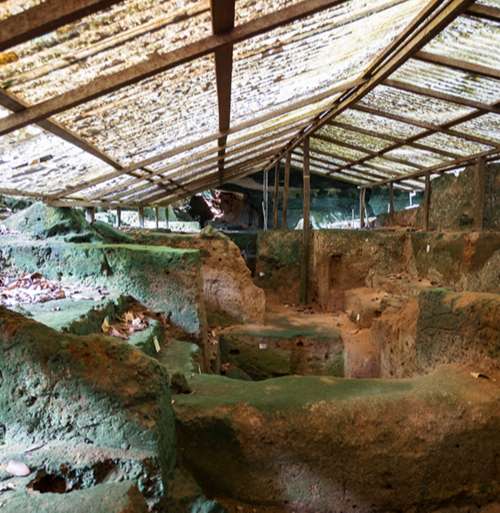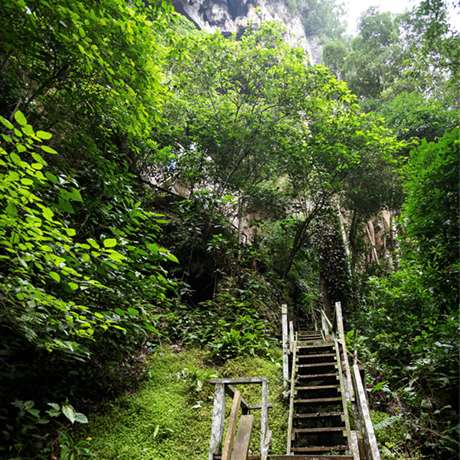niah
—
history
Niah as UNESCO World Heritage. Niah as UNESCO World Heritage . Niah as UNESCO World Heritage .
Niah as UNESCO World Heritage. Niah as UNESCO World Heritage . Niah as UNESCO World Heritage .
In 1855, the notable Victorian naturalist Alfred Russel Wallace, who co-discovered evolution as a principle of speciation with Charles Darwin, travelled to Borneo to examine and collect shells, insects, birds, and the orangutan. He acknowledge it as a potential site for the discovery of important hominin fossils to Charles Darwin and this followed with an excavation of the site by British archaeologists which was unsuccessful. A successful excavation with significant discoveries was made by Barbara and Tom Harisson where they discovered the Deep Skull in 1958.
From then, came the launch of a joint British-Malaysian expedition called the Niah Caves Project (NCP) to verify the work of Harrisson. Archaeological gem with the oldest anatomically modern human remains in the World dating more than 40,000 years ago.
Discovery of “death-ships” (wooden boat-shaped coffins), stone age tools and 20 human burials from Early Holocene and over 200 excavated human burials from the Neolithic era. Niah has the largest Mesolithic and Neolithic cemeteries in Southeast Asia. Early modern human life story as depicted in cave paintings that is nicely preserved. Archaeological collaboration with the University of New South Wales and Australian Research Council on new archaeological discoveries at Niah’s Trader’s Cave.
From then, came the launch of a joint British-Malaysian expedition called the Niah Caves Project (NCP) to verify the work of Harrisson. Archaeological gem with the oldest anatomically modern human remains in the World dating more than 40,000 years ago.
Discovery of “death-ships” (wooden boat-shaped coffins), stone age tools and 20 human burials from Early Holocene and over 200 excavated human burials from the Neolithic era. Niah has the largest Mesolithic and Neolithic cemeteries in Southeast Asia. Early modern human life story as depicted in cave paintings that is nicely preserved. Archaeological collaboration with the University of New South Wales and Australian Research Council on new archaeological discoveries at Niah’s Trader’s Cave.







